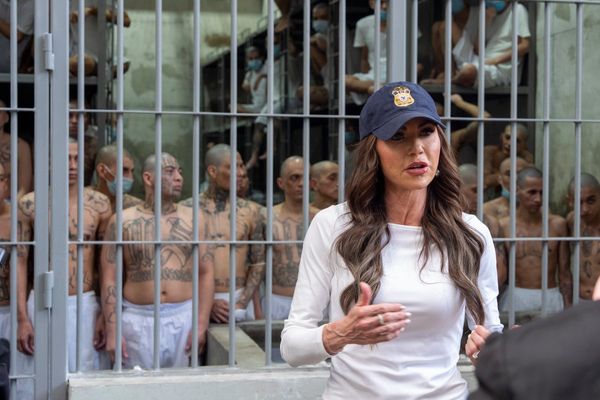Hundreds of Ukrainian fighters have surrendered at Mariupol's Azovstal steelworks, bringing an end to the most devastating siege of Russia's war in Ukraine.
The surrender has allowed Russian President Vladimir Putin a rare victory in the campaign.
Here's a look into the 83-day conflict and how thousands of Ukrainian troops and civilians survived for months in a maze of underground tunnels, and what drove them there.
The fighting began in February
Russia began what it called its "special military operation" in Ukraine on February 24 and the siege of Mariupol started that same day.
Hundreds of residents sought refuge in the enormous complex beneath the Azovstal plant shortly after.
Many saw it as a short-term shelter before retreating to safety somewhere else.
Mariupol is home to the largest port in the Azov Sea region, and under Russian control it will have power over most of Ukraine's Black Sea coastline, which will allow it to impact Ukraine's trade.
The port will also connect forces in Crimea and the Donbas region.
Air strikes caused destruction in following weeks
About a week after the invasion began, there was a Russian air strike on a maternity hospital.
Doctors at the time said women were on the verge of giving birth when a shockwave shattered glass and the ceramic lining of a room.
A week later an estimated 600 people were killed by an air strike at Mariupol Theatre, which was serving as the city's largest bomb shelter.
The word "children" was written on the ground outside in Russian to deter an attack.
Many survivors estimated about 1,000 people were inside at the time of the March 16 air strike, but only about 200 people were seen escaping.
Oksana Syomina, who was in the theatre on that day, said it was now "one big massive grave."
Thousands fled while others became trapped in the steel mill
Russia continued its advances and Maiupol's Azovstal steel plant became the last pocket of resistance as Ukrainian forces stubbornly held on against all odds.
As the air strikes continued, residents sought shelter in the sprawling steel mill and became trapped alongside Ukrainian troops.
Larisa Solop, who would become the last civilian to leave the steel mill after two months in the plant, said intense bombing meant people trying to leave didn't even reach the perimeter of the complex before returning to the shelter.
Civilians like Ms Solop have said they spent their time living in fear, with no electricity and little food supplies.
Russia claimed victory on Mariupol
Russian President Vladimir Putin claimed victory over Mariupol on April 21 without taking the plant — he ordered his troops not to risk more losses by storming the last pocket of Ukrainian resistance.
He said he would not risk sending troops into the Azovstal plant, instead preferring to isolate the holdouts "so that not even a fly comes through".
At this stage in April, Ukrainian authorities estimated more than 21,000 civilians have died in Mariupol since Russia began its invasion of Ukraine.
Satellite images also emerged, appearing to show more than 200 new graves at a cemetery about 20km west of Mariupol, with the town's Mayor Vadym Boychenko claiming Russian troops were burying civilians to cover up "military crimes."
Five days after Mr Putin claimed victory in Mariupol, he agreed "in principle" to UN and International Committee for the Red Cross (ICRC) involvement in evacuating civilians from Mariupol.
After 66 days of fighting, civilians were rescued
On May 1 Ukrainian President Volodymyr Zelenskyy confirmed 100 people were evacuated from the Azovstal steel plant and taken to Ukrainian-controlled territory.
On that day civilians arrived by bus in Zaporzhizhia and Bezimenne, which was the start of a "safe passage operation" coordinated by the UN and ICRC.
Natalia Usmanova, who was evacuated from the plant, said she feared the bunker wouldn't withstand the constant attacks.
At this time Ukraine estimated about 2,000 troops and 1,000 civilians remained under the steel mill, but evacuations have continued since.
Ukrainian troops emerged from the tunnels
More than 260 fighters left the ruins of the Azovstal steel plant on Monday, turning themselves over to the Russian side as the two nations reached a deal.
While Russia has called the operation a mass surrender, Ukraine instead said its garrison had completed its mission.
Five buses carrying troops from the Azovstal steelworks arrived in the Russian-controlled town of Novoazovsk late on Monday, which is about 32 kilometres from Mariupol.
Some of the evacuated troops were wounded and carried out of the buses on stretchers to the hospital.
Mr Zelenskyy said he hoped his country would be able to save its troops.
"[I] want to stress that Ukraine needs Ukrainian heroes alive. That's our principle."
Mr Zelenskyy said the operation to save the defenders of Mariupol had been started by Ukraine's military intelligence, but there was still a way to go to get them home safe.
He said the "most influential" international mediators were involved.
"The work continues to return guys home. And this work requires delicacy and time.''
ABC/wires







